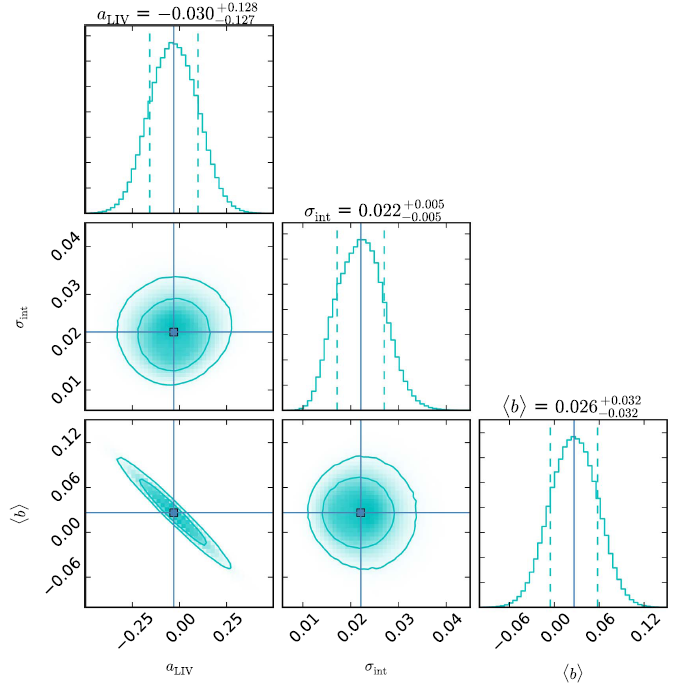Lorentz invariance is a foundational symmetry of space time in Einstein’s relativity. However, deviations from Lorentz symmetry at the Planck energy scale are predicted in various quantum gravity theories attempting to unify General Relativity and quantum mechanics. As a consequence of Lorentz invariance violation (LIV), the speed of light in a vacuum would have energy dependence, also known as the so-called vacuum dispersion. The energy scale for LIV (E_QG) could therefore be constrained by comparing the arrival time differences of photons with different energies emitted simultaneously from the same source.
Thanks to their short spectral lags, cosmological distances, and very high-energy photons, gamma-ray bursts (GRBs) have been viewed as the most promising sources for studying LIV effects. However, all current investigations used lags extracted between two fixed energy bands in the observer frame. Due to the redshift dependence of GRBs, these two energy bands can correspond to a different pair of energy bands in the rest frame, thus potentially introducing energy dependence to the extracted spectral lag and/or an extra uncertainty to the resulting constraints on LIV. This can be resolved by choosing two appropriate energy bands fixed in the rest frame and estimating the observed lag for two projected energy bands by the relation E_obs=E_rest/(1 + z), where E_obs and E_rest are the photon energy measured in the observer and the rest frame, respectively. It actually means that the energy-dependent effect can be removed in this way. However, no one has made systematical research on the LIV effect using the spectral lags extracted in the rest frame.

Figure 1. 1D marginalized distributions and 2D regions, with the 1sigmaand 2sigma contours of the LIV parameters. The vertical solid lines represent the best fits, and the vertical dashed lines enclose the 68% credible region.
In this work, we make use of the rest-frame spectral lags from 56 Swift GRBs presented in Bernardini et al. (2015), for the first time, to study the possible LIV effect. Compared with previous works, which relied on using the observer-frame lags, our present work removes the problem associated with the energy dependence of the extracted spectral lags and then obtains reliable constraints on LIV. By fitting the rest-frame spectral lag data using a maximization of the likelihood function, we obtain a robust limit on LIV (see Fig. 1). Our analysis indicates that there is no evidence of LIV. On the other hand, since the GRBs in the sample of Bernardini et al. (2015) cover a wide redshift range, they also enable us to test the LIV in different redshift ranges for the first time. To test whether or not the LIV effect varies with the cosmological redshift, we separate the sample of 56 GRBs into 4 redshift bins. We also find no evidence for the redshift variation of the LIV effect.
The work by Jun-Jie Wei and Xue-Feng Wu has been published in The Astrophysical Journal. Please see ApJ, 851, 127 (2017) for more details (https://doi.org/10.3847/1538-4357/aa9d8d).

